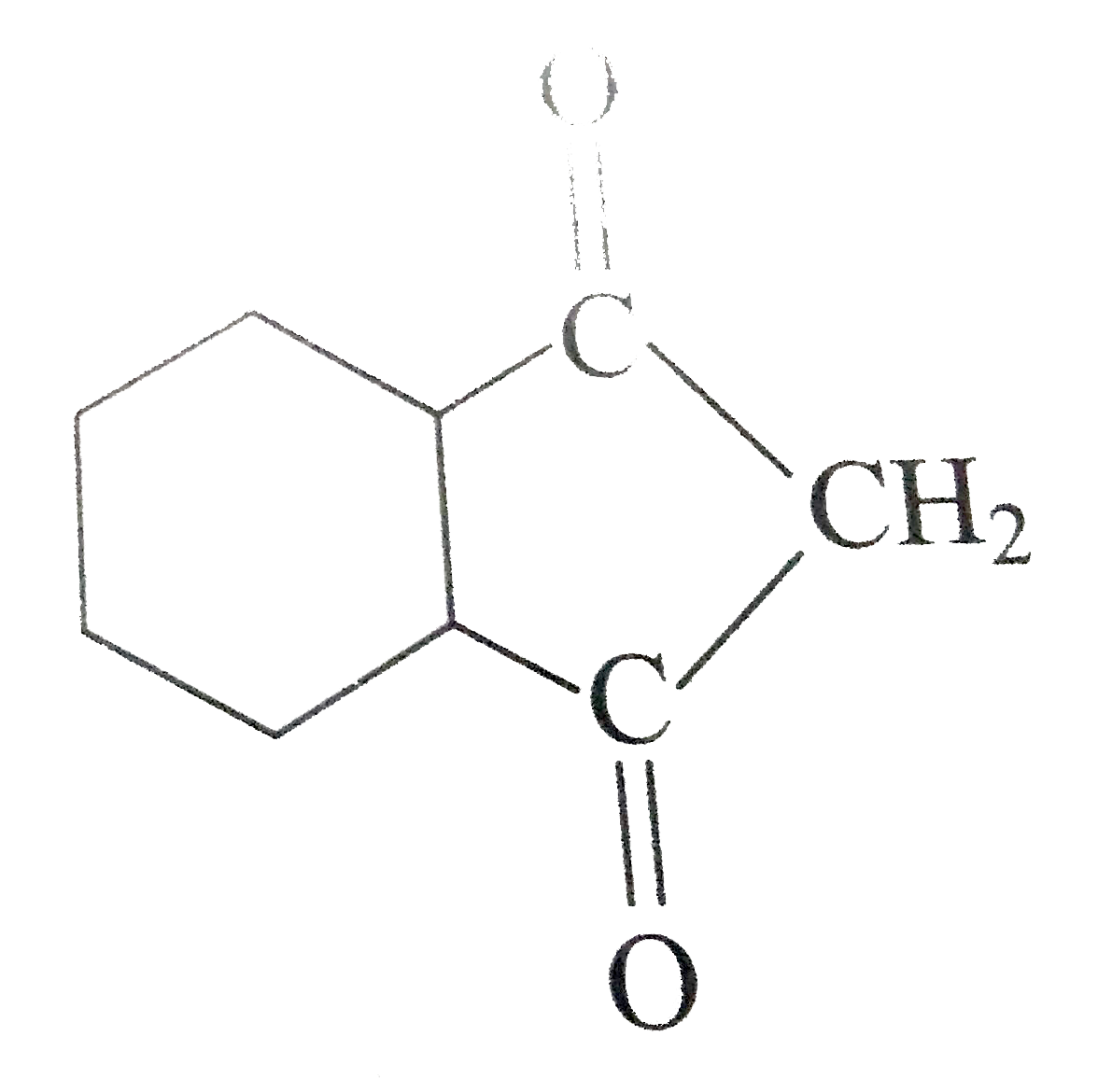Hydrocarbon (X), , on reaction with boron hydride followed by treatment with yields (A). On reductive ozonolysis (A) yields a mixture of two aldehydes, (B) and (C ). Of these, only (B) can undergo Cannizzaro reaction. (A) exists in two geometrical isomer, and , of which is more stable. Gives structures of (X), (A), (B), (C ), , and with proper reasoning.
Form formula . It seems to be an alkyne, which forms alkene on hydroboration. Since, alkene forms two aldehydes B and C on reductive ozonolysis. Out of which B can undergo Cannizzaro's reactive. It means that aldehyde B has no - h atom and the -CHO group is linked to tertiary butyl group. Hence hydrocarbon X has to be
Compound B has no - H atom hence it undergoes Cannizzaro's reaction.
The alkene A gives two geometrical isomers, these are cis and trans.

Topper's Solved these Questions
- BOOK - AAKASH INSTITUTECHAPTER - ALDEHYDES, KETONES AND CARBOXYLIC ACIDS EXERCISE - Assignment (SECTION -J Akash challengers Questions)7videos
ALDEHYDES, KETONES AND CARBOXYLIC ACIDS
- BOOK - AAKASH INSTITUTECHAPTER - ALCOHOLS, PHENOLS AND ETHERS EXERCISE - Try Yourself5videos
ALCOHOLS, PHENOLS AND ETHERS
- BOOK - AAKASH INSTITUTECHAPTER - AMINES EXERCISE - Assignment Section -J (Aakash Challengers Questions)9videos
AMINES
Similar Questions
Two isomeric compounds, (A) and (B), have the same formula, C11H13OCI. Both are unsaturated, yield the same compound (C) on catalytic hydrogenation, and produce 4-chloro-3-ethoxybenzoic acid on vigorous oxidation. (A) exists in geometrical isomers, (D) and (E), but not (B). Give structures of (A) to (E) with proper reasoning.
View SolutionC11H16 (A) reacts with two equivalent of H2 and on reductive ozonolysis gives two equivalent formaldeyde and (B) of the following structure.

Identify structure of (A).View Solution
Knowledge Check
- Question 1 - Select One
An organic compound (A) reacts with H2 to give (B) and ( C) successively. On ozonolysis of (A) , two aldehydes (D) C2H4O and ( E) C2H2O2 and On ozonolysis of (B) only propanal is formed. Compound (A), (D) & ( E) are
A B
B C
C DCH3CHO
DCH3CHO - Question 2 - Select One
(A)O3−−−−−−→Zn/AcOH(B)+(C)C7H14 Compound (A) exist in geometrical isomers and (B) Cannizaro reaction. (A) will :
ACH3−CH∣CH3−CH3∣C=CH−CH3B(CH3)3CCH2−CH=CH2C(CH3)3C−CH=CH2−CH3DCH3−CH3∣C∣CH3−CH2−CH=CH2 - Question 3 - Select One
An organic compound C6)H12(X) on reduction gives C6H14(Y). X on ozonolysis gives two aldehydes C2H4O(I)andC4H8O(II). Identify the compounds X, Y and aldehydes (I) and (II).
AX=CH3CH=CHCH2CH2CH3,Y=CH3(CH2)4CH3,(I)=CH3CHO,(II)=CH3(CH2)2CHOBX=CH3CH2CH=CHCH2CH3,Y=CH3(CH2)4CH3,(I)=CH3CHO,(II)=CH3CHOCX=CH3CH2CH2CH=CH2,Y=CH3(CH2)4CH3,(I)=HCHO,(II)=CH3(CH2)2CHODX=CH3(CH2)3CH3,(I)=CH3CHO,(II)=CH3CH2CHO
An organic compound (A) reacts with ethanol to give (B) and (C). On acid hydrolysis (C ) yields (B) and (D). oxidation of (D) gives (B). (B) is an acid and forms a salt with Ca(OH)2 which on dry distillation gives (E ), C3H6O. Give the structures of (A) to (E ) with proper reasoning.
View SolutionAn organic compound (A) (C6H10O) on reaction with CH3MgBr followed by acid treatment gives compound (B). The compound (B) on ozonolysis gives compound (C ), which in the presence of a base gives 1-acetyl cyclopentane (D). The compound (B) on reaction with HBr gives compound (E ). Write the structures of (A), (B), (C ), (D), and (E ). Show how (D) is formed from (C ).
View SolutionAn alkene (A) with molecular formula C5H10 undergoes ozonolysis to form two aldehydes "(X)" and "(Y)" in which "(X)" contains four carbon atoms.Another "alkene (B) which is an isomer of (A) undergoes ozenolysis to form two aldehyde (C) and (D) in which (C) contain "3" carbon atoms.Identify "(X),(Y),(A)," (B) , (C) and (D).Write the reactions involved
View SolutionA Grignard reagent (A) and a haloalkene (B) react together to give (C). Compound (C) on heating with KOH yields a mixture of two geometrical isomers, (D) and (E), of which (D) predominates. (C) and (E) have the same molecular formula and (C) gives 1-bromo-3-phenyl propane on reaction with HBr in the presence of a peroxide. Give structures of (A), (B)and (C) and configuration of (D) and (E) with reasons.
View SolutionAn organic compound (A) (C6H10) on reaction with CH3MgBr followed by acid treatment gives compound (B). The compound (B) on ozonolysis gives compound (C ), which in the presence of a base gives 1-acetylcyclo-pentene (D). The compound (B) on reaction with HBr gives (E ). Write the structures of (A), (B), (C ), and (E). Show how (D) is formed form (C ).
View Solution

